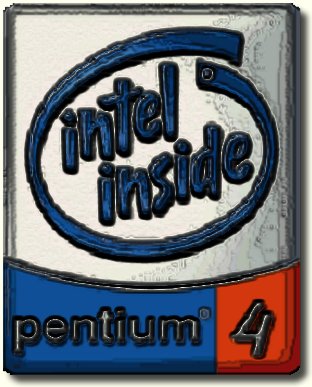Intel's New Pentium 4 Processor
Introduction
There is no denying it; the last twelve months have been anything but enjoyable for Intel, the mighty chipmaker based in Santa Clara, California. While the chip giant is still making billions and has thus certainly no serious reasons to complain about small profits or even losses, its reputation had to suffer rather badly. What had started with a buggy and therefore delayed 'Camino' (i820) chipset for the brand new 'Coppermine ' processor in Fall 1999, continued with the 'MTH-recall ', the Timna-drop, the bad press about Intel's peculiar relationship to Rambus Inc. and finally with the recall of the Pentium III 1.13 GHz processor due to instability issues.
At the same time Intel's archenemy AMD had become stronger and more successful than ever. In terms of processor performance the Sunnyvale-based chipmaker and its Athlon-processor did not only manage to catch up with the once so untouchable Intel, it slowly overtook and forced Intel in the sad role of a pursuer that just isn't able to keep up with its opponent. Lately, AMD managed to get so far ahead of Intel in terms of processor performance, that even the most fanatic Intel-followers ran out of reasonable arguments against AMD's products.
Finally, Intel is more determined than ever to take back what once was thought to be in its possession until eternity. The brand new Pentium 4 processor shall make Intel the provider of the fastest, most advanced and thus simply best microprocessor in the world. Intel wants to get back to the top and leave AMD far behind. The mysterious Pentium 4, codename 'Willamette', is supposed to be powerful enough to ensure that Intel reaches this juicy goal. Let's see if this new processor is indeed good enough.
The Architecture Of Pentium 4
Intel's declining image and the success of its opponent AMD forced the chip giant to act different than ever before. While it used to be very difficult to find out any details of upcoming Intel-processors ahead of their release in the past 10 years, Intel was giving major amounts of architectural information about Pentium 4 to whomever was asking for it. Thus I am sure that most of you have already heard loads about Pentium 4's funky 'NetBurst-Architecture', the 'Rapid Execution Engine', the 'Hyper Pipeline, 'SSE2' and even the glorious 'Execution Trace Cache'. However, following a long tradition, I will still dedicate a major amount of time of this article to a detailed explanation of what is really behind Pentium 4 and all its fancy new features. It's the best way to understand the following benchmark results and it should help you making a decision if Pentium 4 is indeed a product for you.
Get Tom's Hardware's best news and in-depth reviews, straight to your inbox.
